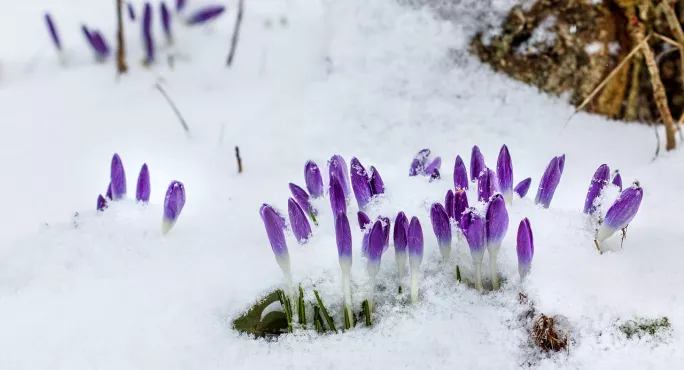- Home
- Five snow day reads for KS4 students
Five snow day reads for KS4 students

The mini-beast from the east seems to be a rather less flurried affair than I was hoping. I sat, on Sunday evening, snuggling up to the fire, watching yet more flakes descend, the hypnotic effect wearing off as the clock ticked towards Monday. Once again, it was the zone of uncertainty (as Geoffrey Boycott, a well-known cricket commentator, would put it). Would school be open on Monday? Or would we stay at home?
Being off again would mean it’s back to setting snow work rather than leaving students with no work. I hate to spoil the fun by setting writing, which, in any case, could be quite skimpy as students abandon home for the snowy slopes.
But a snow day is the ideal time to set some recreational reading for when the sled, tray or plastic bag is muddy and worn. And what could be better than an array of some rather fine snow novels for students from Year 10 up to choose from? Warning: some of the texts may contain some adult or sexual content.
1. Snow Falling on Cedars by David Guterson is my favourite snow-bound crime novel of all time. The contrast between the steamy claustrophobic courtroom and the steady burying snow relentlessly falling outside provides a lyrical opening. The case of a murdered fisherman becomes under cross-examination a much more profound narrative of racial tensions and injustice, of the dilemma of land ownership on the fictional island of San Pedro. Most poignant of all is the narrative of Japanese-Americans interned in camps away from their homes, and the battles fought between America and Japan in the Second World War, that I knew nothing of. Guterson has been criticised for the novel’s slow pace, but for me, the time taken to build the readers’ empathy with a struggling community, divided by suspicion, makes it a masterpiece.
2. The Snow Child by Eowyn Ivey is one of the most beautiful stories I have ever read. It pitches the reader into an Arctic world in which survival is the key theme. Into this frozen, inhospitable landscape a husband and wife arrive, carrying with them a longing for a child. The echoes of fairy tales, such as Snow White and Thumbelina are already there in the plot and the portrayal of the Snow Child herself is hauntingly ambiguous. It’s the combination of the symbolic with the realistic battle for physical and emotional survival that makes this book such a gripping read.
3. Into the Abyss by Carol Shaben is a non-fiction read for those who like their snowbound winter harshly, terrifyingly real. A plane crash in Alberta in October 1984 provides an engrossing tale of endurance of four survivors, which is complicated by the fact that their saviour is actually a prisoner, Paul Archambault, who was being transported in the plane when disaster struck. What is so heart-warming is the epilogue to the rescue as the survivors try to support the reintegration of their saviour into the civilised world.
4. Miss Smilla’s Feeling for Snow by Peter Hoeg is a great early Nordic noir read and a devastating tale of murder and racial inequality. The exploration of the conflicting cultures is thoroughly engaging. The main character herself is a typically self-reliant introvert with family issues of her own. Independent-minded, curious about the death of a child who has in a short time melted her heart, she takes on the role of investigator. The second part of the novel and the thriller ending seemed a bit less convincing, however.
5. The Tenderness of Wolves by Stef Penney I picked up from a review section in a Sunday supplement. The journey across the frozen landscape of Northern Canada is realistically portrayed. The situation is made more urgent by a mother’s quest for the truth behind the murder of a trapper, especially as her missing son is the prime suspect. But what really stays with me is the scene where Mrs Ross and her companion come across the wolves. The beauty and intensity of the incident captivate.
For younger children, there are the now perennial favourite Narnia stories by CS Lewis and, for those who find the Christian allegory too much, there is always Phillip Pullman’s Northern Lights.
If tobogganing has left too little time to complete the task then the short story, The Ice Palace by Scott Fitzgerald is a disturbing and thought-provoking read. And for poetry lovers, what could be more perfect than Keats’s The Eve of St Agnes, a tale of elopement in the midst of the harshest of medieval winters?
Snow on this scale happens so rarely. It gives us a short time for exploration into beautiful, but often deadly wintry worlds from the comfort of our homes.
Yvonne Williams is a head of English and drama in the south of England
Want to keep up with the latest education news and opinion? Follow Tes on Twitter and like Tes on Facebook
Keep reading for just £1 per month
You've reached your limit of free articles this month. Subscribe for £1 per month for three months and get:
- Unlimited access to all Tes magazine content
- Exclusive subscriber-only stories
- Award-winning email newsletters



